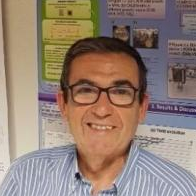Catalytic Materials: State-of-the-Art and Perspectives in Spain
A special issue of Catalysts (ISSN 2073-4344). This special issue belongs to the section "Catalytic Materials".
Deadline for manuscript submissions: 31 May 2024 | Viewed by 6588
Special Issue Editors
Interests: heterogeneous catalysis; green chemistry; biorefinery; renewable raw materials biotechnology; transesterification; biodiesel; biodiesel-like biofuels; eco diesel; lipases; additives; oxygenated additives
Special Issues, Collections and Topics in MDPI journals
Interests: catalysis; optical sensors; metal-organic frameworks; molecularly imprinted polymers; CO2 conversion
Interests: photocatalysis; visible light; photodegradation of pollutants; photophysics; fluorescence; laser flash photolysis
Special Issue Information
Dear Colleagues,
It is a pleasure to invite you to submit your manuscripts to this Special Issue entitled Catalytic Materials: State of the Art and Perspectives in Spain. When addressing the current challenges of society related to the increase in concern about the environment, indcustrial emissions, and the use of chemicals, new emerging technologies are needed. The solutions to such great challenges pursue sustainability and should mainly be based on zero waste, decarbonization, and cyclic economy. In this sense, catalysis is essential, as it is well known that it can boost and/or improve processes, e.g., by reducing their reaction times, related waste or costs. Furthermore, catalysis-based research may provide deep molecular insight into a process, broadening the understanding of the mechanisms of chemical reactions. This Special Issue will try to collect the latest research developed in Spain related to catalysis, paying special attention to environmental, energy, and chemical applications.
Accordingly, submitted manuscripts could cover, but do not have to be exclusively limited to, one or more of the following topics: catalysts preparation and characterization, homogeneous and heterogeneous catalysis, environmental catalysis, catalysis and energy, bio(mimetic)catalysis, electrocatalysis, photocatalysis, multifunctional catalysts, and CO2 conversion; they must contain a topic related to these concerns or represent a significant benefit to contemporary society.
Reviews are also welcome, but we mainly encourage reviews that exclusively cover recent publications within the period 2016-2022 in order to offer a contemporary overview of the state of the art in Spain.
Prof. Dr. Diego Luna
Dr. Sergio Carrasco
Dr. Rebeca Martínez-Haya
Guest Editors
Manuscript Submission Information
Manuscripts should be submitted online at www.mdpi.com by registering and logging in to this website. Once you are registered, click here to go to the submission form. Manuscripts can be submitted until the deadline. All submissions that pass pre-check are peer-reviewed. Accepted papers will be published continuously in the journal (as soon as accepted) and will be listed together on the special issue website. Research articles, review articles as well as short communications are invited. For planned papers, a title and short abstract (about 100 words) can be sent to the Editorial Office for announcement on this website.
Submitted manuscripts should not have been published previously, nor be under consideration for publication elsewhere (except conference proceedings papers). All manuscripts are thoroughly refereed through a single-blind peer-review process. A guide for authors and other relevant information for submission of manuscripts is available on the Instructions for Authors page. Catalysts is an international peer-reviewed open access monthly journal published by MDPI.
Please visit the Instructions for Authors page before submitting a manuscript. The Article Processing Charge (APC) for publication in this open access journal is 2700 CHF (Swiss Francs). Submitted papers should be well formatted and use good English. Authors may use MDPI's English editing service prior to publication or during author revisions.
Keywords
- heterogeneous catalysis
- green chemistry
- electrocatalysis
- photocatalysis
- bioremediation
- CO2 conversion
- environmental contamination
- energy storage







